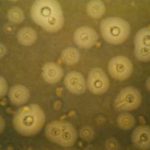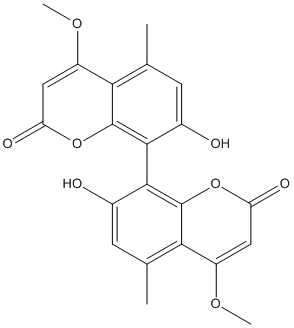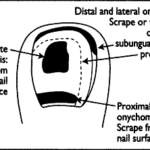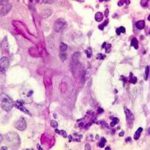Date: 26 November 2013
Secondary metabolites, structure diagram: Trivial name – Orlandin
Copyright: n/a
Notes:
Species: A. nigerSystematic name: [8,8′-Bi-2H-1-benzopyran]-2,2′-dione, 7,7′-dihydroxy-4,4′-dimethoxy-5,5′-dimethyl-Molecular formulae: C22H18O8Molecular weight: 410Chemical abstracts number: 69975-77-5Selected references: Orlandin: a nontoxic fungal metabolite with plant growth inhibiting properties. Cutler, Horace G.; Crumley, Farrist G.; Cox, Richard H.; Hernandez, Oscar; Cole, Richard J.; Dorner, Joe W. Georgia Coastal Plain Exp. Stn., Sci. Educ. Adm., Tifton, GA, USA. Journal of Agricultural and Food Chemistry (1979), 27(3), 592-5.
Images library
-
Title
Legend
-
BAL specimen showing hyaline, septate hyphae consistent with Aspergillus, stained with Blankophor
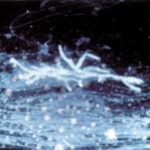
-
Mucous plug examined by light microscopy with KOH, showing a network of hyaline branching hyphae typical of Aspergillus, from a patient with ABPA.
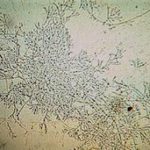
-
Corneal scraping stained with lactophenol cotton blue showing beaded septate hyphae not typical of either Fusarium spp or Aspergillus spp, being more consistent with a dematiceous (ie brown coloured) fungus
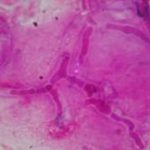
-
Corneal scrape with lactophenol cotton blue shows separate hyphae with Fusarium spp or Aspergillus spp.
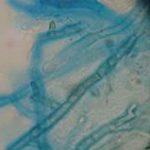
-
A filamentous fungus in the CSF of a patient with meningitis that grew Candida albicans in culture subsequently.
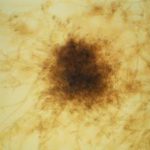
-
Transmission electron micrograph of a C. neoformans cell seen in CSF in an AIDS patients with remarkably little capsule present. These cells may be mistaken for lymphocytes.
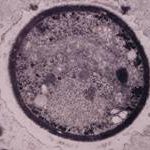
-
India ink preparation of CSF showing multiple yeasts with large capsules, and narrow buds to smaller daughter cells, typical of C. neoformans
